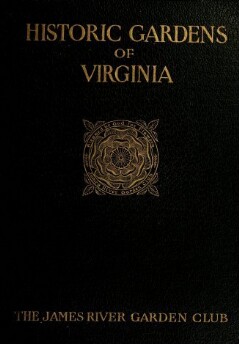Stranica 334 [334]
JE PoeTtTOoOMAG AND RAPPARANNOCEK
with a room above for servants. The stables were on the corner;
the garden and orchard in front and on the side.
The land was a part of the Kenmore estate. Mary Wash¬
ington loved flowers and transplanted many from her former home.
Calycanthus and box, said to have been planted by her, still grow
in this garden. The same sun-dial marks the passing days. How
we would listen could her flowers speak and tell us of those days!
After the Revolution, when states had sprung from colonies,
George Washington, on a visit to his mother, planted thirteen
horse chestnut trees along a walk leading from this house to Ken¬
more. One of these trees still lives.
The change from Ferry Farm was great, for one who loved
wide spaces and plantation life. Yet, Mary Washington made no
complaint. “George thought it best,’’ she said. [Iredericksburg
was in a direct line from eastern to southern colonies. Courter
after courier would appear at this cottage door with dispatches
that told of victory or defeat. Those trying years, when her son
was leading the Continental forces, Mary was praying, and with
calmness she remonstrated with her daughter for undue excite¬
ments. ‘The sister of the Commanding General should be an ex¬
ample of faith and fortitude,”’ she said.
Knitted socks, garments and provisions, the fruit of her thrift
and economy, were sent the General in camp for distribution among
the soldiers.
November 11, 1791, Washington arrived in Fredericksburg
with his staff of French and American officers, en route from
Yorktown to Philadelphia. Leaving his retinue, he walked un¬
attended to the unpretentious cottage, where his mother awaited
him. She was alone. She bade him welcome, with a warm embrace
and the endearing name “George.’’ She spoke much of old
times and old friends, but of his glory, not one word. Her only
appearance in public as the hero’s mother was at a ball given in
Fredericksburg. In the autumn of 1784 LaFayette, for the sole
purpose of paying his respect to Washington’s mother, visited Fred¬
[207 |

